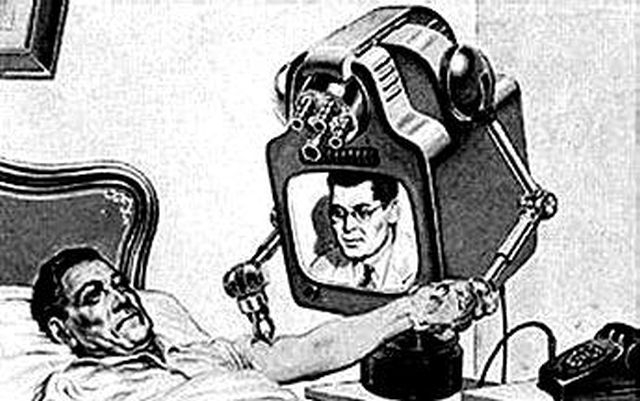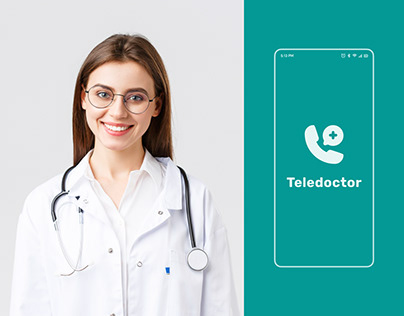Teledoctors: Bridging the Gap In Between Patients and Doctor
The emergence of teledoctors represents a considerable change in the medical care landscape, using solutions to enduring access issues faced by carriers and clients alike. By incorporating telemedicine into conventional practices, health care systems can get to underserved and remote populations, giving crucial medical assessments without the barriers of distance and traveling. This paradigm shift not only boosts individual interaction however likewise maximizes source allocation for providers. Nonetheless, the extensive adoption of teledoctors raises vital concerns regarding the sustainability of such methods and the effects for future medical care shipment. What difficulties exist in advance in ensuring this design's performance and equity?
Surge of Telemedicine

The rise of telemedicine is likewise sustained by the demand for economical health care. Medical care systems worldwide are under stress to reduce costs while keeping quality care, and telemedicine supplies a feasible remedy. By lessening the requirement for physical gos to, telemedicine decreases overhanging expenses for health care centers and inevitably reduces the monetary concern on people.
Additionally, the COVID-19 pandemic acted as a stimulant, speeding up the adoption of telemedicine techniques. Social distancing steps and the demand to lessen exposure risk demanded a change towards remote consultations, prompting regulatory bodies to sustain and adjust telehealth solutions. This change has not just proven telemedicine's effectiveness yet also its potential to advance as a staple component of modern healthcare systems.
Advantages for Clients
Largely, telemedicine improves accessibility, permitting individuals in underserved or remote locations to consult medical care service providers without the requirement for substantial traveling. Telemedicine also provides patients the comfort of receiving medical guidance and therapy from the comfort of their homes, decreasing the time and expense associated with taking a trip to a medical care facility.
Additionally, telemedicine supports continuity of care by helping with routine follow-ups and monitoring, which are critical for managing persistent conditions. Individuals can easily schedule visits and gain access to healthcare services outside traditional workplace hours, suiting their busy way of livings. This versatility causes boosted individual involvement and adherence to therapy strategies, possibly leading to much better wellness outcomes.
Furthermore, telemedicine can assist alleviate the risk of infection transmission, a problem enhanced by the COVID-19 pandemic. By decreasing the requirement for in-person sees, clients can avoid congested waiting spaces and lower direct exposure to transmittable diseases. Eventually, telemedicine equips patients by providing prompt, effective, and personalized medical care services.
Advantages for Service Providers
For medical care companies, telemedicine provides substantial advantages that boost the efficiency and reach of their practice. By leveraging electronic technology, service providers can expand their services to a more comprehensive market, consisting of those in remote or underserved locations. This not only relieves geographical barriers but additionally maximizes individual retention and acquisition by making health care extra accessible.
With telemedicine, the requirement for physical space decreases, enabling companies to conserve on actual estate and operational costs. This flexibility can lead to boosted individual examinations per day, therefore improving revenue possibility.
Telemedicine also fosters an extra collective setting for doctor. teledoctors. It allows smooth sharing of individual info among professionals, boosting diagnostic accuracy and therapy end results. Furthermore, digital systems can integrate with electronic health and wellness documents (EHRs), enhancing information precision and enhancing administrative jobs
In addition, telemedicine enhances patient contentment, which is important for provider reputation and success. By providing practical and timely treatment, providers can boost client commitment and engagement, additionally reinforcing the provider-patient connection.
Overcoming Obstacles
While telemedicine provides countless advantages for medical care carriers, it likewise offers challenges that require mindful consideration. Healthcare suppliers have to adhere to rigorous regulations like HIPAA to protect sensitive details, consequently requiring financial investment in secure platforms and recurring team training. teledoctors.
One more obstacle is the digital divide, which can prevent accessibility to telemedicine solutions. Not all patients have equivalent access to the required innovation or web connectivity, particularly those in rural or underserved locations. This disparity can worsen existing healthcare inequalities, making try this it important for providers to explore alternate solutions, such as collaborations with community companies, to link this space.
Additionally, there are limitations in performing physical exams from another location. Certain conditions require in-person analysis, highlighting the demand for a hybrid design that incorporates telemedicine with standard sees. Companies must navigate these challenges by establishing protocols to determine when telemedicine is proper and ensuring smooth transitions in between in-person and virtual care.
Future of Healthcare
The future of healthcare is poised for a transformative evolution, driven by the quick combination of modern technology and innovation. This not only boosts patient benefit yet likewise expands accessibility to healthcare, specifically in underserved and rural locations.
Expert system (AI) and equipment discovering are additionally established to play crucial functions. These technologies can evaluate large quantities of data, offering predictive insights into individual their website wellness, boosting diagnostic precision, and customizing treatment strategies. AI-driven tools can boost medical care suppliers' capacities, bring about more enlightened decision-making and much better patient end results.
Moreover, wearable innovation and Internet of Medical Points (IoMT) gadgets are reinventing individual engagement and positive wellness monitoring. These devices allow continuous health surveillance, enabling very early detection of timely treatments and potential concerns.
As these modern technologies remain to development, they promise to produce an extra reliable, obtainable, and patient-centric health care system, inevitably linking the gap in between individuals and medical care service providers. - teledoctors
Conclusion
Teledoctors are transforming healthcare by considerably improving availability and performance via remote examinations. This innovation sustains individuals in underserved locations by supplying timely medical recommendations without requiring physical gos to, therefore enhancing individual involvement and continuity of care. Doctor benefit from much more effective time monitoring and improved partnership chances. Despite challenges such as regulative problems and technological barriers, the future of medical care shows up effective and progressively comprehensive due to the important source combination of telemedicine right into typical treatment versions.

As telemedicine continues to improve medical care distribution, clients stand to gain significantly from this change. Mostly, telemedicine improves accessibility, enabling individuals in remote or underserved areas to consult medical care suppliers without the demand for extensive traveling. Telemedicine also offers individuals the convenience of receiving medical recommendations and treatment from the convenience of their homes, decreasing the time and cost connected with taking a trip to a medical care center.
Eventually, telemedicine encourages clients by supplying timely, efficient, and personalized medical care solutions.
Comments on “Leading Teledoctors Solutions for Convenient Online Health Care”